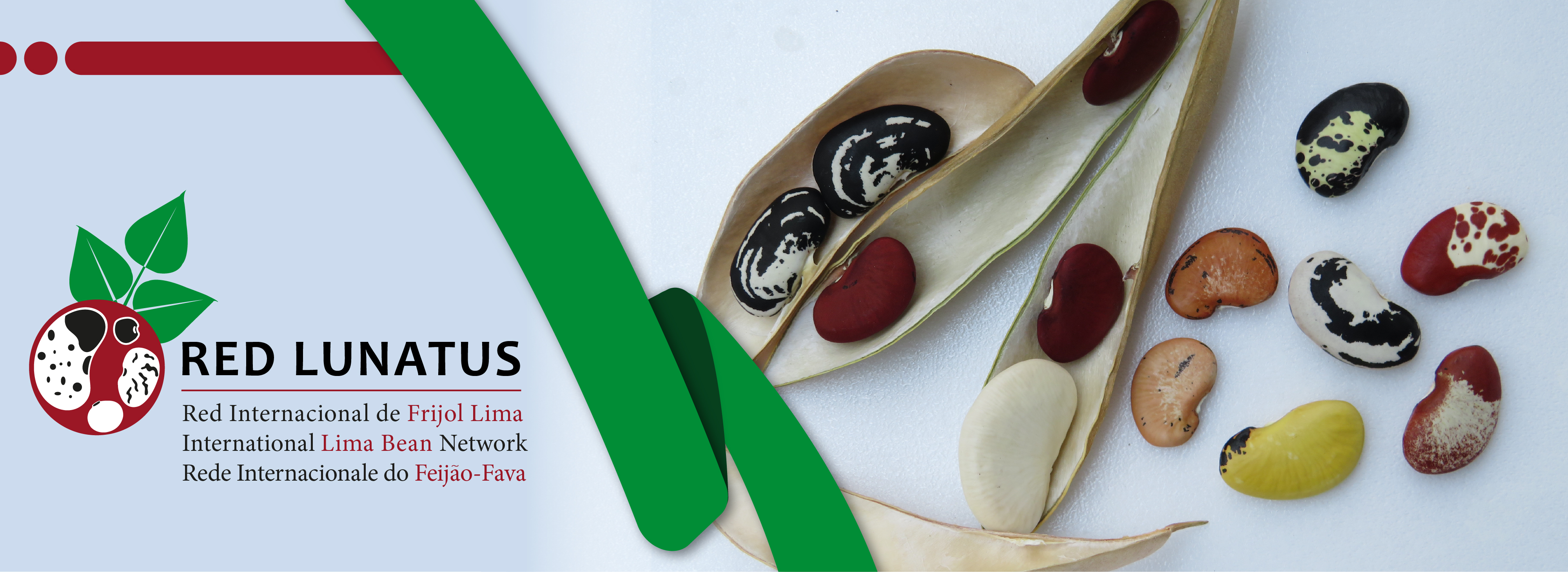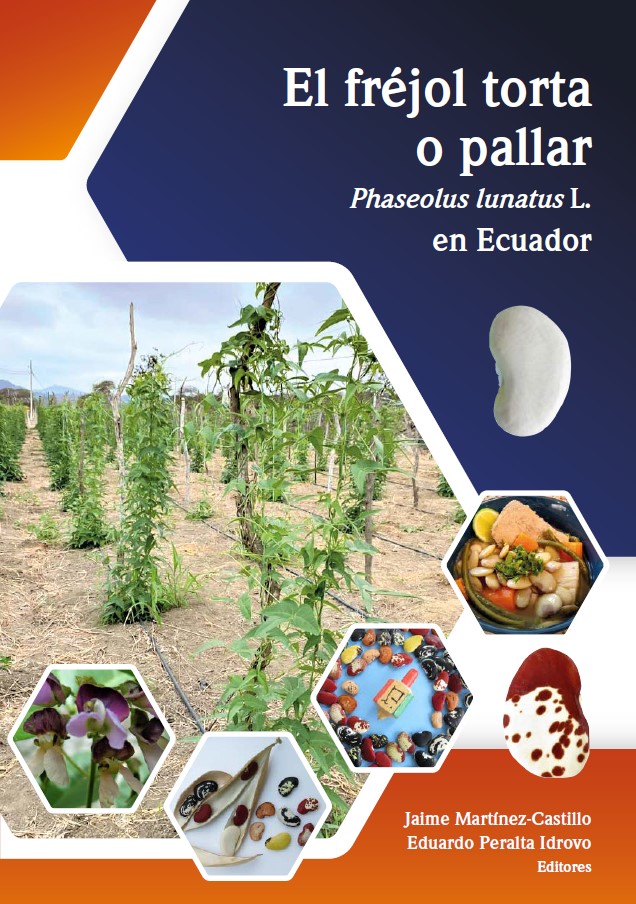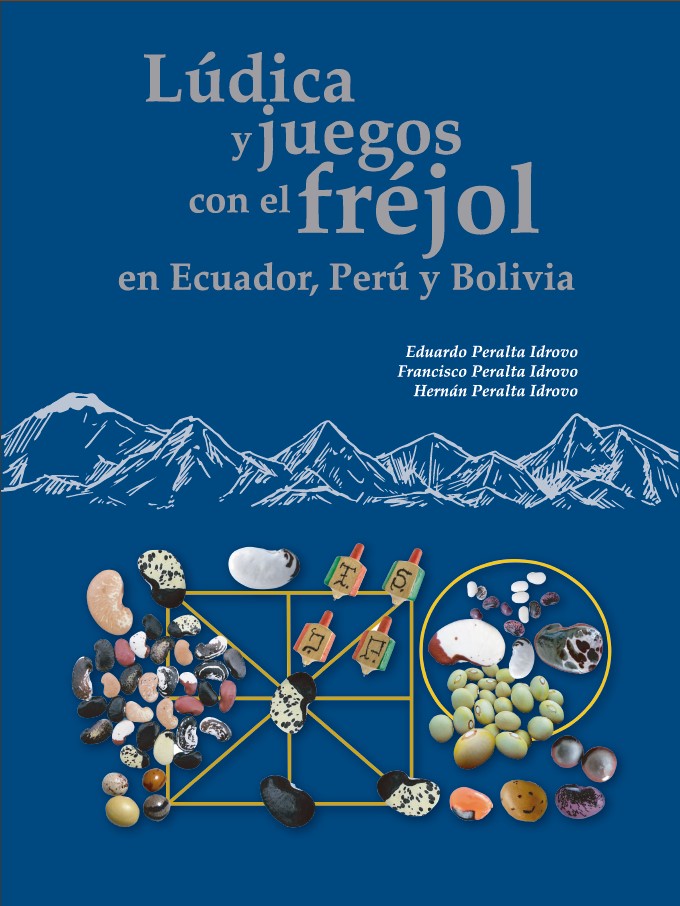
Who are we?
The International Lima Bean Network (also known as the Lunatus Network) is a group of academics interested in the study of Lima beans (Phaseolus lunatus L.). It began in 2014 as a collaboration between Mexican and Brazilian researchers studying Lima bean genotypes from Brazil and Mexico. This collaborative study examined several of Lima bean including the genetic resources of the species, its domestication, and nitrogen fixation in the roots. One of the main outcomes of this collaboration was the celebration of the "International Lima Bean Symposium I", held in October 2016 in Teresina, Brazil. This symposium lasted two days and had two objectives: to increase research efforts to improve knowledge of this species and to bring together researchers from cutting-edge institutions working with Lima beans in Brazil, Mexico, and Colombia. In the following years, funding was sought to hold a second international meeting, but it was not obtained. It was not until 2022 that, with the support of the Central University of Ecuador, the Ecuadorian Corporation for the Development of Research and the Academy (CEDIA) and the Scientific Research Center of Yucatan, A.C., the “International Lima Bean Symposium II: Challenges and Perspectives in Climate Change Scenarios” was held in Quito, Ecuador. This event was attended by researchers from a range of institutions in Ecuador, Brazil, Mexico, Colombia, Peru, the United States, and Italy. It lasted two days and focused on four topics: conservation, improvement, origin and evolution, and plant-microorganism relationship of the rhizosphere. It was during this symposium that the decision was made to create the International Lima Bean Network and, after several work meetings, the Lunatus Network was officially established on August 24, 2022.

Agrobiodiversity and Climate Change
Climate change and human activities are contributing to environmental deterioration and the loss of biodiversity globally. To avoid extinction, populations of different species will need to adapt to new local conditions or migrate to new suitable habitats. Among the organisms that will be most sensitive to climate change are domesticated species. This sensitivity is due to at least three factors: 1) the intensity of artificial selection during domestication tends to greatly reduce genetic diversity and as a result, most domesticated species have low genetic diversity, small population sizes, and a high accumulation of genomic load; 2) during domestication, traits of human interest are often selected for, while physiological traits are often controlled by the breeder; 3) the cultivated species are geographically limited and their potential migration to suitable sites depends on human management, including the deforestation of natural vegetation and the resulting intensification of global warming. In combination, these three factors limit the capacity of domesticated species to adapt to new climatic conditions. Given that our future food supply will depend heavily on domesticated species, it is imperative that we design alternative strategies for their management and conservation.

To mitigate the impact of climate change on domesticated species, it has been proposed that wild relatives or landraces – local varieties adapted to the environment – could be used to introduce useful genetic diversity into vulnerable populations. In theory, characteristics of interest can be introduced through adaptive introgression, a mechanism by which a fragment of DNA that confers a beneficial adaptation is introduced into the genome of another species through crosses and backcrosses. The development of genomic sequencing and complex statistical programs have made it possible to identify the genetic bases of beneficial adaptations and to identify the genetic variants that confer local adaptation to conditions found in climate change. Recently, machine learning algorithms have been developed which allow the construction of models that describe the change in the frequencies of adaptive alleles in regional populations. By projecting these models into the future, and comparing them with current models, it is possible to identify geographic regions where populations will need to respond to selection and have a resulting change in allele frequency to adapt to new climatic conditions. In theory, those populations that must respond to selection pressures will be more vulnerable to climate change than populations that will remain stable over time. This valuable information can be used to prioritize populations for conservation, identify populations that could contribute useful genetic diversity to vulnerable populations, and design the mechanisms of adaptive gene flow between vulnerable and resilient populations.
The species of interest for our Network, the Lima bean, has increased in global relevance in the last decade. This is partially the result of a growing concern for food security as climate change has begun to pose challenges for grain legume production. It is also because Lima beans have a greater range of ecological adaptations than that observed in the common bean (P. vulgaris). This suggests the existence of a broader genetic base to use in Lima bean breeding programs. Studying the effects of climate change on Lima bean is relevant to all three of the working groups within the Lunatus Network: origin and evolution, conservation, and improvement. First, studies of population genomics and local adaptation to climate change are contributing to understanding the origin and evolution of the species. Second, the information on local adaptation and climate change makes it possible to identify which populations will be vulnerable to climate change, and thus coordinate their conservation. Third, the identification of populations resistant to climate change will allow for improvement projects of populations susceptible to climate change. The final goal of the study of the effects of climate change on Lima beans is to carry out frontier research that allows supporting the conservation and permanence of traditional agricultural systems of Lima beans, and thus contribute to human food security in the near future.

Lima bean (Phaseolus lunatus L.)
The genus Phaseolus comprises about 80 wild species of legumes, all of American origin (Debouck, 2021). Of all these species, only five were domesticated, including the Lima bean. In its wild state, the Lima bean has a wide distribution ranging from northern Mexico to northern Argentina, at elevations from sea level to greater than 2000 m in the Andes of South America. Throughout its range, the wild Lima bean inhabits diverse ecological conditions, making it a species of special scientific interest.
Lima bean was domesticated twice. Genetic evidence shows that one domestication occurred in Mesoamerica and another in South America. Domestication in Mesoamerica may have occurred in central-western Mexico. This domestication event gave rise to landraces with small seeds known as the “Sieva” and “Potato” types. In South America domestication likely occurred in the Andes region of northern Ecuador or Peru. This domestication event gave rise to large-seeded landraces known as the “Large Lima” type. In both cases, domestication caused changes in domesticated populations as compared to their wild relative, including but not limited to increased seed and pod size, loss or decrease in pod dehiscence, decrease in anti-nutritional compounds in the seed, and earlier flowering. After its domestication, the Lima bean was introduced to new regions of the American continent where different human groups gave it unique names including “ib” in the Maya language of the Yucatan Peninsula, “cacha” in the Paez language of Colombia, and “pallar” in the Quechua language of Peru.

Lima beans are rich in protein, dietary fiber, vitamins, and minerals. They have been an important part of the diet of various indigenous communities in the Americas since pre-Hispanic times. The archaeological record indicates that the cultivation of Lima bean is ancient among pre-Columbian cultures. In the Andes, the oldest archaeological records of domesticated Lima beans are found in Peru, in Cueva Guitarrero and Chilca, with an age of 3,500 and 5,600 years respectively. In Mesoamerica, the oldest remains date back about 1,300 years and come from Dzibilchaltún in Yucatán, Mexico. In post-Columbian times, the Lima bean was brought to Africa, Asia and Europe, and today it is the second most important cultivated species of the genus Phaseolus.
Objectives, Mission, Vision
Objetivos
General
Promote the conservation, study, and use of Lima beans as a possible partial solution to the challenge of global food insecurity.
Specifics
- Generate a digital repository of the existing information on Lima bean in the topics of: origin and evolution, conservation, improvement and plant-microorganism interactions in the rhizosphere.
- Generate, support, and coordinate research initiatives on Lima beans.
- Support the formation and/or training of high-level human resources.
- Promote the production, consumption, and use of Lima beans.
- Promote alternative uses of Lima beans and those associated with their plant-microorganism relationship in the rhizosphere.
Network Mission
We generate collaborations to compile, share, and disseminate information about Lima beans. We promote work and research synergies, and we train high-level human resources, all in order to promote the cultivation of Lima beans to address global food security problems.
Network Vision
To be recognized as a collaborative network of actors belonging to different sectors of society (academic, scientific, industrial, governmental, and NGOs, among others) that supports and promotes the study, conservation, and use of Lima beans.

Organizational Structure
- General Coordinator: Dra. Luz Marina Espinoza de Arenas
- Technical Secretariat: Isabel Milagros Gavilán Figari
- Coordinator of Origin and Evolution: Dra. María Isabel Chacón Sánchez
- Coordinator of Plant-Rhizosphere Relationship: Dr. Ernesto A. Ormeño Orrillo
- Coordinator of Conservation: M. C. Luis Guillermo Santos
- Coordinator of Improvement:
Members
Founding Members of the International Lima Bean Network
| Name | Area of Interest | Country of Residence | Institution |
|---|---|---|---|
| María I. Chacón Sánchez | Origin and Evolution | Colombia | Universidad Nacional de Colombia |
| Elena Bitocchi | Origin and Evolution | Italia | Università Politecnica delle Marche |
| Daniel G. Debouck | Origin and Evolution | Colombia | The Alliance Bioversity International/ Centro Internacional de Agricultura Tropical |
| Rubén H. Andueza Noh | Origin and Evolution | México | Instituto Tecnológico de México |
| Jaime Martínez Castillo | Origin and Evolution | México | Centro de Investigación Científica de Yucatán, A. C. |
| Jonás A. Aguirre Liguori | Origin and Evolution | México | Universidad Autónoma de Yucatán |
| Leidy T. García Navarrete | Origin and Evolution | Colombia | Universidade Nacional de Colombia |
| Eduardo Peralta Idrovo | Origin and Evolution | Ecuador | Investigador independiente |
| Angela C. de Almeida Lopes | Origin and Evolution | Brazil | Universidad Federal do Piauí |
| Nora Castañeda Alvarez | Conservation | Germany | Crop Trust |
| Luis G. Santos Meléndez | Conservation | Colombia | The Alliance Bioversity International/ Centro Internacional de Agricultura Tropical |
| Angel R. Murillo Ilbay | Conservation | Ecuador | Instituto Nacional de Investigaciones Agropecuarias |
| Carlos M. Nieto Cabrera | Conservation | Ecuador | Universidad Central del Ecuador |
| Jorge A. Duitama Castellanos | Improvement | Colombia | Universidad de los Andes |
| Luz M. Espinoza de Arenas | Improvement | Perú | Universidad Nacional San Luis Gonzaga |
| Regina L. Ferreira Gomes | Improvement | Brasil | Universidade Federal do Piauí |
| Kimberly Gibson | Improvement | USA | University of California, Davis |
| Horacio S. Ballina Gómez | Improvement | México | Instituto Tecnológico de México |
| Eudaldo Jadán Veriñaz | Improvement | Ecuador | Universidad Técnica de Machala |
| Ademir S. Ferreira Araujo | Plant-Rhizosphere | Brazil | Universidade Federal do Piauí |
| Andrea León Cadena | Plant-Rhizosphere | Ecuador | Universidad Central del Ecuador |
| Ernesto A. Ormeño Orrillo | Plant-Rhizosphere | Perú | Universidad Nacional Agraria La Molina |
New Members
| Name | Area of Interest | Country of Residence | Institution |
|---|---|---|---|
| Sandra V. Garcés Carrera | Improvement | Ecuador | Instituto Nacional de Investigaciones Agropecuarias |
| Salvador Soler | Improvement | España | Universitat Politècnica de València |
| María Rosario Figàs | Improvement | España | Universitat Politècnica de València |
| Jaime Prohens | Improvement | España | Universitat Politècnica de València |
| Natalia de Almeida | Conservation | Uruguay | Universidad Tecnológica |
| Rafael Vidal | Conservation | Uruguay | Universidad de la República |
| Amsalu Nebiyu Woldekirstos | Improvement | Etiopía | Jimma University |
| Alvaro R. Monteros Altamirano | Conservation | Ecuador | Instituto Nacional de Investigaciones Agropecuarias |
| Eddie E. Zambrano Zambrano | Conservation | Ecuador | Instituto Nacional de Investigaciones Agropecuarias |
| Juan Carlos Suárez Salazar | Improvement | Colombia | Universidad de la Amazonia |
| Amelia Huaringa Joaquín | Improvement | Perú | Universidad Nacional Agraria La Molina |
| Christine H. Diepenbrock | Improvement | USA | University of California, Davis |
| Amir Mohammad Mokhtari | Improvement | Poland | University of Life Sciences in Poznań |
| Doris S. Chalampuente Flores | Improvement | Ecuador | Universidad Técnica del Norte |
| Isabel Milagros Gavilán Figori | Improvement | Perú | Instituto Politécnico de la Producción – CITE agroindustrial Ica |
| Elena Villacres | Improvement | Ecuador | Instituto Nacional de Investigaciones Agropecuarias |
| Emmalea Garver Ernest | Improvement | USA | University of Delaware |
| Raymundo N. Oliveira Silva | Improvement | Brazil | Universidade Federal do Piauí |
| Verónica Brito da Silva | Improvement | Brazil | Universidade Federal do Piauí |
| Ernesto Gonzalo Cañarte Bermúdez | Conservation | Ecuador | Instituto Nacional de Investigaciones Agropecuarias (INIAP) Estación Experimental Portoviejo |
| José Bernardo Navarrete CedeñoC | Conservation | Ecuador | Instituto Nacional de Investigaciones Agropecuarias (INIAP) Estación Experimental Portoviejo |
| Jennifer Jahaira López Anchundia | Conservation | Ecuador | Instituto Nacional de Investigaciones Agropecuarias (INIAP) Estación Experimental Portoviejo |
| César Steven Andrade Murilllo | Conservation | Ecuador | Instituto Nacional de Investigaciones Agropecuarias (INIAP) Estación Experimental Portoviejo |
| Jordan Gilmer Bailon Pachay | Conservation | Ecuador | Instituto Nacional de Investigaciones Agropecuarias (INIAP) Estación Experimental Portoviejo |
| Silvia Lorena Montero Cedeño | Conservation | ecuador | Escuela Superior Politécnica Agropecuaria de Manabí (ESPAM-MFL) |
| Sergio Miguel Vélez Zambrano | Conservación | Ecuador | Escuela Superior Politécnica Agropecuaria de Manabí (ESPAM-MFL) |
| Jefferson Bertín Vélez Olmedo | Conservation | Ecuador | Universidad Técnica de Manabí (UTM) |
| Jefferson Bertín Vélez Olmedo | Conservation | Ecuador | Universidad Técnica de Manabí (UTM) |
Repository
- A special issue of the International Symposium on Lima Beans II: Challenges and Perspectives in Climate Change Scenarios, can be found at https://revistadigital.uce.edu.ec/index.php/SIEMBRA/edición/vista/329
Contacts
- If you are interested in joining the Lunatus Network, you can contact the General Coordinator (This email address is being protected from spambots. You need JavaScript enabled to view it.) or email This email address is being protected from spambots. You need JavaScript enabled to view it..






































































































































































































































